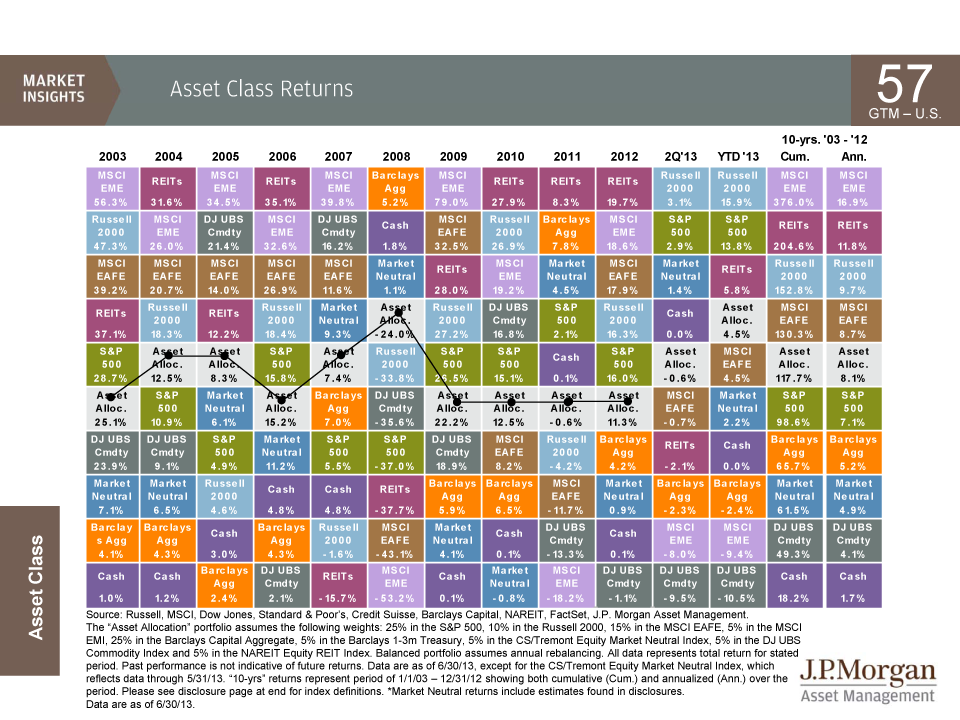Why (and How) Diversified Investors Win
Post on: 23 Июнь, 2015 No Comment

By Carl Richards September 6, 2011 11:35 am September 6, 2011 11:35 am
Carl Richards
Diversification remains one of the most fundamental investing principles, and it’s often one of the most misunderstood. In order to understand diversification you first have to take a comprehensive view of the process of planning a portfolio.
Investors tend to view individual investments in isolation. This often happens because of the focus we place on finding the best overall investment versus figuring out how individual investments work together for the benefit of the whole.
Instead of looking at investments in isolation, we should consider them part of a much larger tapestry, and make sure that the overall picture reflects intelligent portfolio design concepts backed up by an academic approach.
Diversifications primary power is that it lets us reduce risks that are avoidable.
These avoidable risks include:
- Betting on a particular industry or sector. We see this in the form of trying to pick the next hot sector, like technology, banking or oil stocks.
- Market timing. Most of us believe that you cant figure out when stocks will zig and bonds will zag. At the same time, we’re often quick to latch on to anything that might look like detailed research about the direction of the markets. In reality, its nothing more than a guess.
- Owning individual stocks. While its certainly not impossible to identify the next Apple, history proves that it’s highly improbable. Placing large, concentrated bets on individual stocks can be a path to incredible wealth, but so can a single spin of the roulette wheel (if you get lucky).

The magic of diversification is that you can take two individual investments, which when viewed in isolation are individually risky, and blend them in a portfolio. Doing so creates an investment that’s actually less risky than the individual components and often comes with a greater return. In finance, this is as close as we get to a free lunch.
What Diversification Looks Like
Here’s what a sample, diversified portfolio might look like.
First, lets start with two, undiversified portfolios. Portfolio A is invested 100 percent in United States stocks, as measured by the S&P 500-stock index, and Portfolio B is invested 100 percent in international stocks, as measured by the MSCI EAFE index. We’ll use 34 years (1976-2010) for our sample period since it’s the longest period available for which we have data from MSCI EAFE.
During those 34 years the S&P 500 had an annualized return of 11.17 percent, and international stocks had an annualized return of 10.72 percent. (All of the portfolios mentioned in this post were rebalanced quarterly. And yes, I know that you cant invest in an index per se, but you can buy index funds and similar vehicles for next to nothing.)
Now lets look at the risk associated with each of these hypothetical investments.
Although there are many ways to view risk, for our purposes we’ll focus on the number of negative quarters and volatility as measured by standard deviation (the lower this number is, the better). From 1976-2010, the S&P 500 had 42 negative quarters and a standard deviation of 15.39 percent. International stocks had 45 negative quarters with a standard deviation of 17.26 percent.
As you can see, each of these portfolios look risky individually. But the magic of diversification is that when we blend them, the whole is better than the sum of its parts.
So let’s create Portfolio C using use a fairly standard 60 percent allocation to the S&P 500 and 40 percent allocation to international stocks. Now this portfolio gets a return of 11.21 percent. While thats not much better than the S&P 500 alone, in terms of risk, this 60/40 portfolio only had 37 negative quarters with a standard deviation of 14.45 percent.














